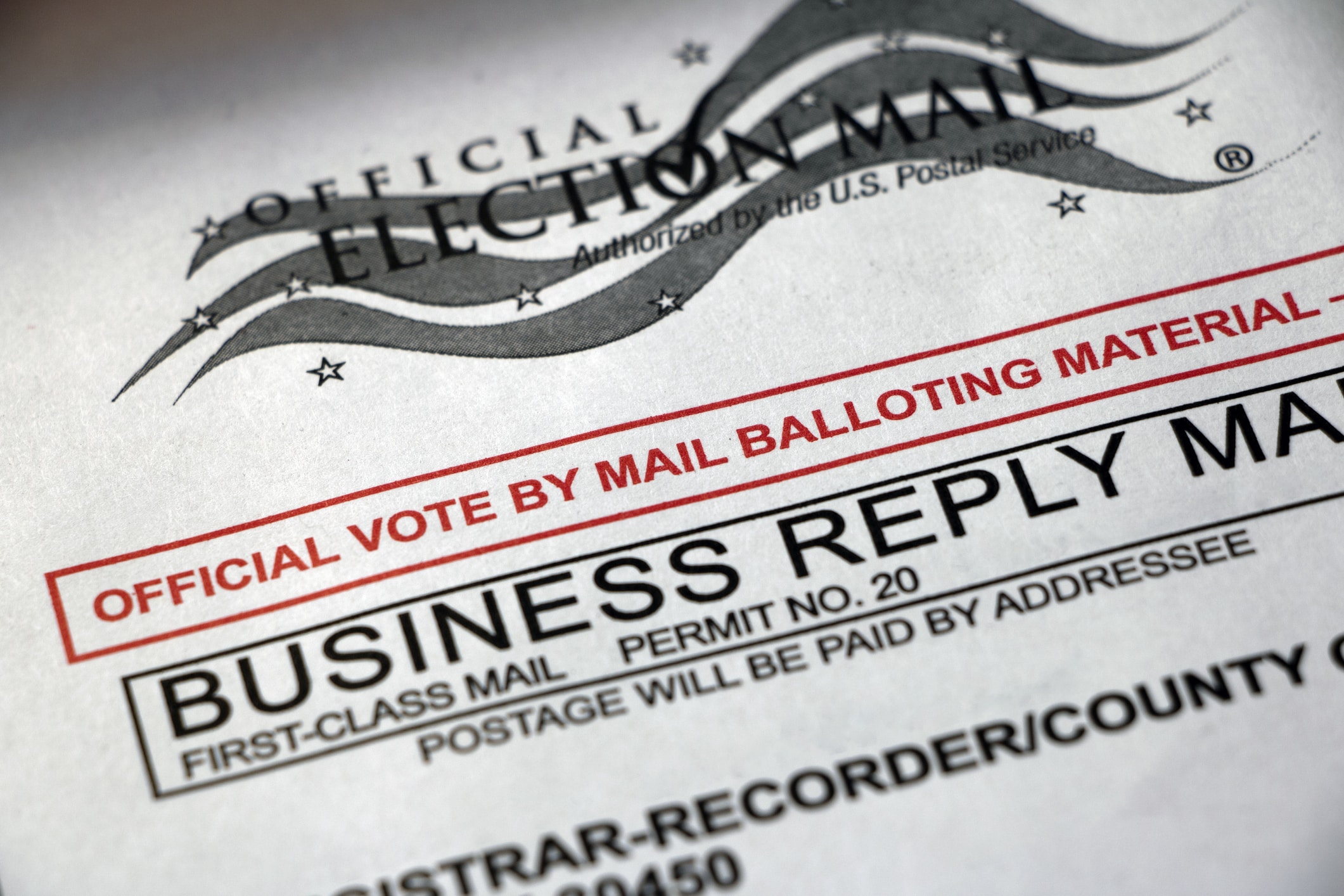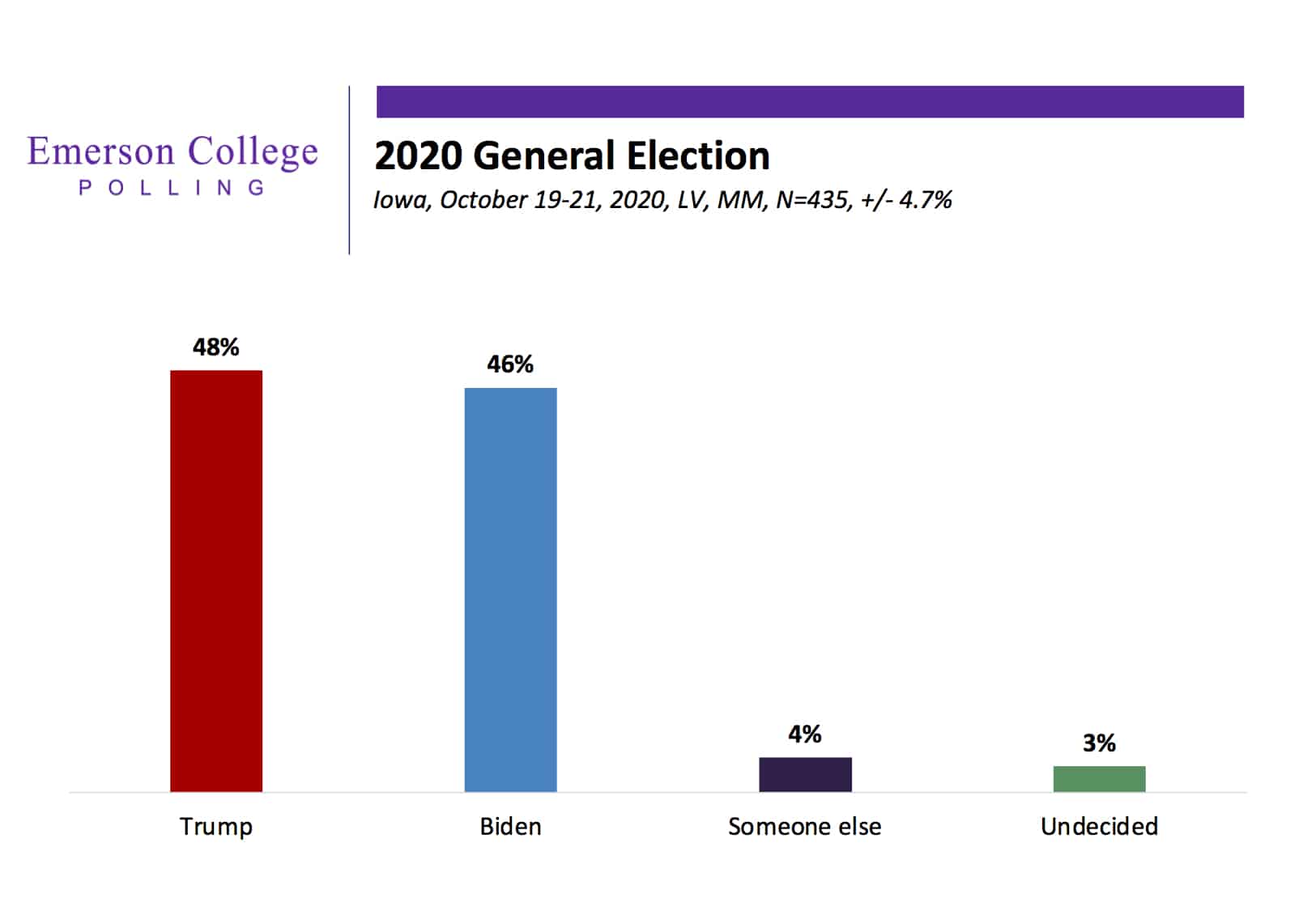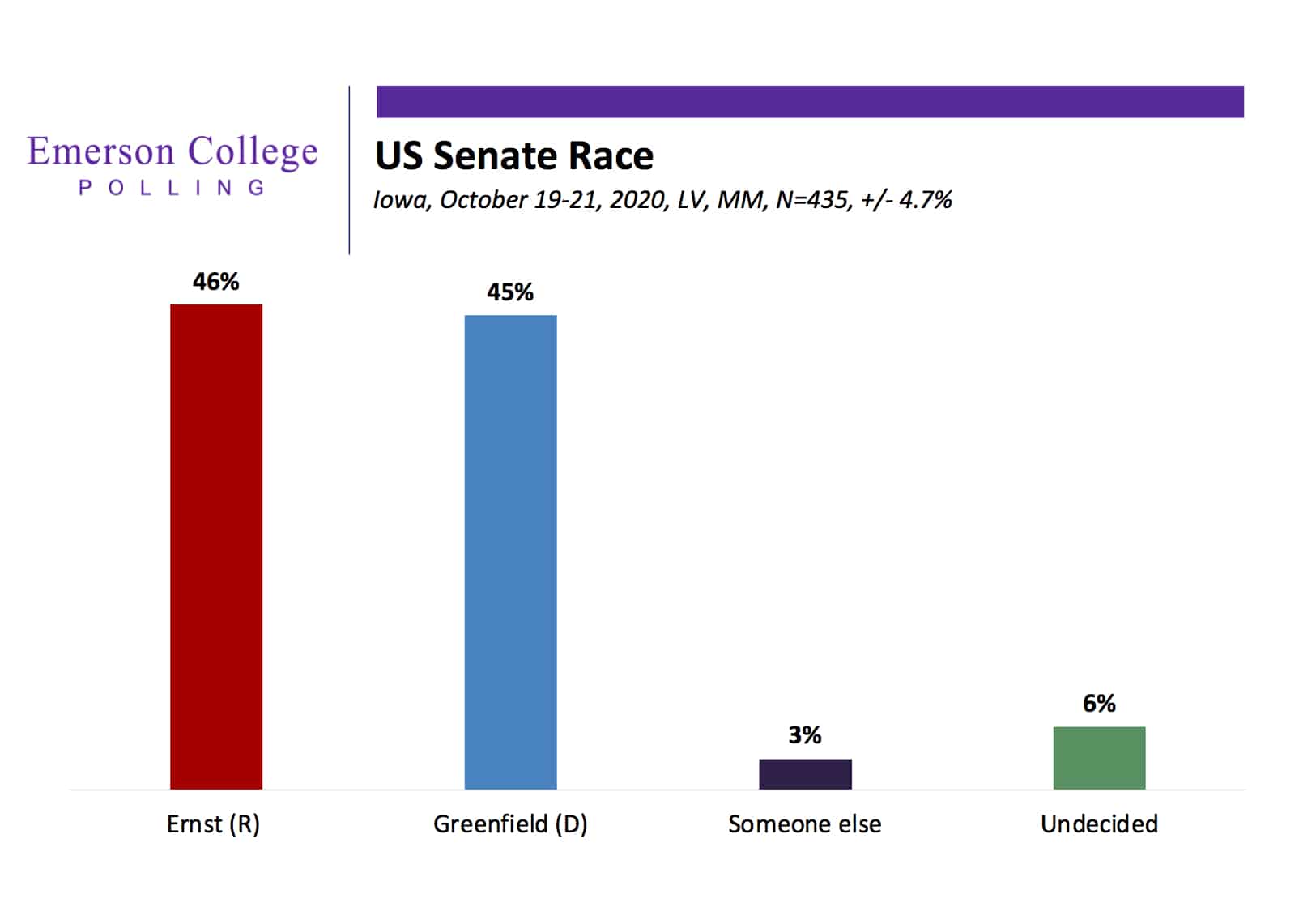A new Emerson College poll of likely voters in Iowa finds President Trump with a two-point lead over former Vice-President Joe Biden, 48% to 46%, with 3% undecided and 4% planning to vote for someone else (N=435, MM, likely voters, October 19-21, +/-4.7).
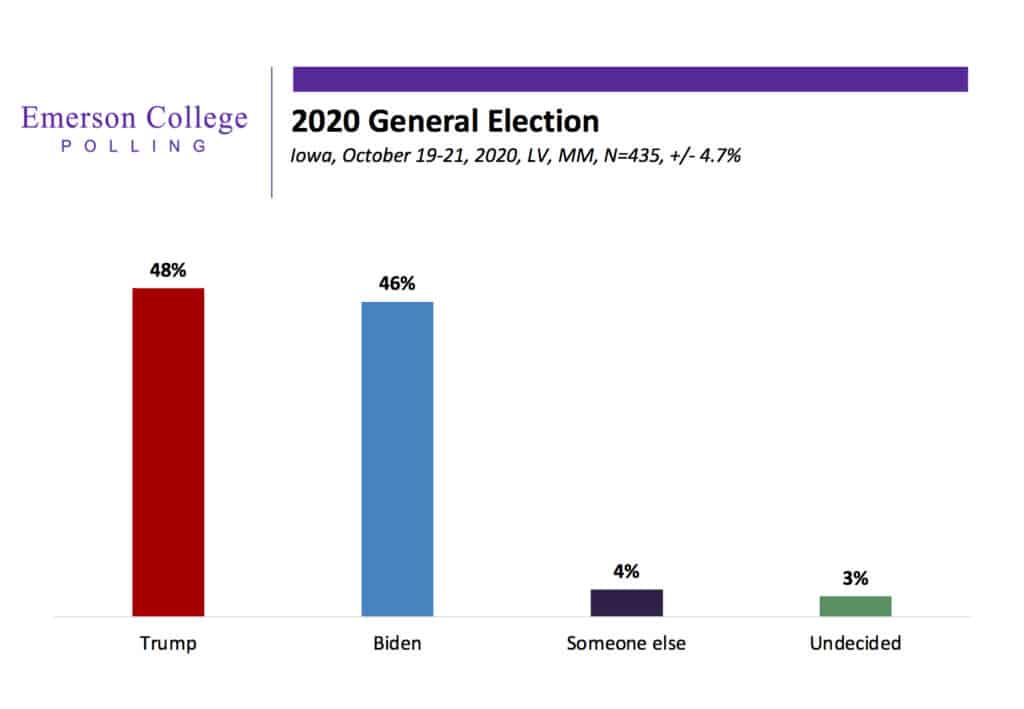
There is a clear gender divide among Iowa voters: men are breaking for Trump, 52% to 40%, while women are breaking for Biden, 50% to 44%.
Independents are split, with 45% supporting Biden and 43% supporting Trump. Democrats are breaking for Biden, 86% to 10% and Republicans are breaking for Trump, 89% to 7%.
In the U.S. Senate race, incumbent Republican Senator Joni Ernst has a narrow one-point lead over her Democratic opponent Theresa Greenfield, 46% to 45%; 6% are undecided and 3% plan on voting for someone else.
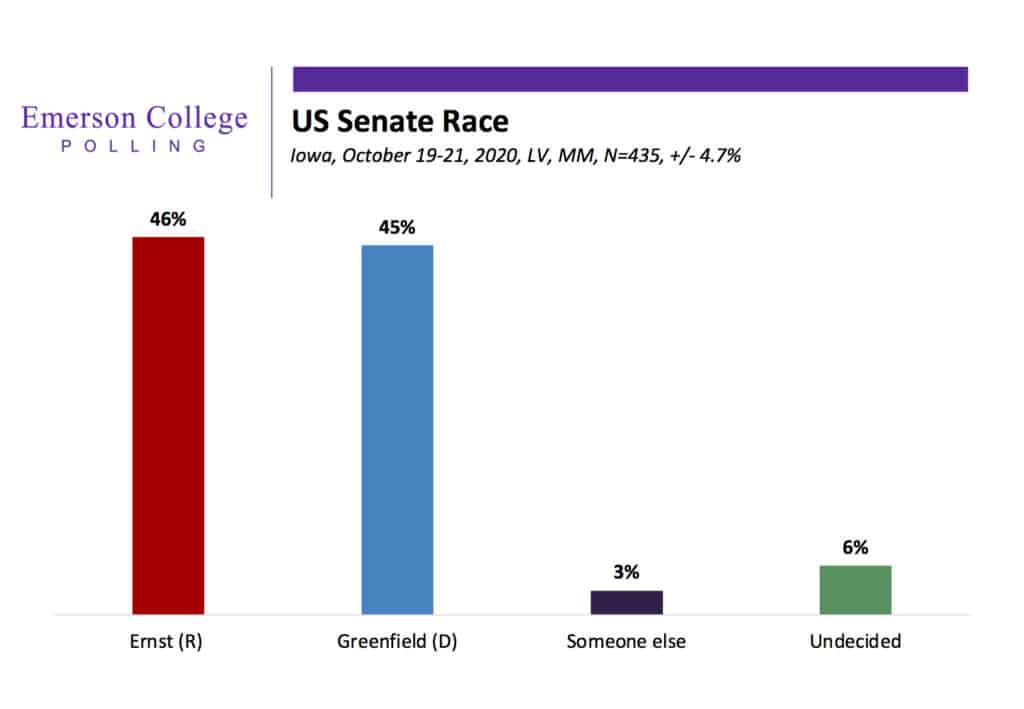
The most important issue for Iowa voters in deciding their vote for president is the economy at 39%, followed by healthcare at 12%, social issues at 10%, 9% said it was COVID-19 while 8% said climate change. Eighteen percent (18%) reported something else as their most important voting issue.
Regarding the public health threat of COVID-19, the plurality (45%) of Iowa voters believe it is a major threat to the public health of the United States while 31% believe it to be a moderate threat. Seventeen percent (17%) categorize COVID-19 as a minor threat, and 7% say it is not a threat at all.
Among voters who see COVID-19 as a major threat, Biden leads 85% to 13% while those who see it as a moderate threat break for Trump 73% to 18%, minor threat for Trump 79% to 6% and 81% who see it as no threat are voting for Trump.
Spencer Kimball, Director of Emerson College Polling notes “the perceived threat of COVID-19 is having a significant impact on who voters plan to support, and an increase or decrease in the spread of the virus could change the outcome of the race.”
President Trump’s popularity is slightly underwater in Iowa with 48% disapproval and 45% approval.
Caller ID
The Iowa Emerson College poll was conducted October 19-21, 2020. The sample consisted of likely Democratic, Republican, and Independent voters, n=435, with a Credibility Interval (CI) similar to a poll’s margin of error (MOE) of +/- 5.7 percentage points. The data sets were weighted by gender, age, education, race and region based on 2016 voter turnout modeling. It is important to remember that subsets based on gender, age, party breakdown, ethnicity, and region carry with them higher margins of error, as the sample size is reduced. Data was collected using an Interactive Voice Response (IVR) system of landlines (n=41), SMS-to-web texts (n=331), and an online panel provided by MTurk (n=62).



